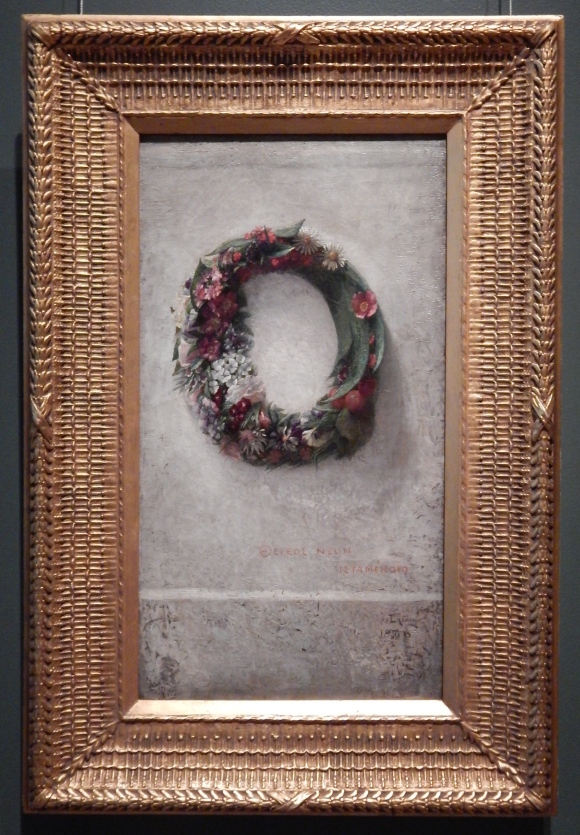On my one free day from our digital humanities institute at GMU, I did what virtually everyone else in the group did: made haste for Washington to spend the day looking at art (and, for a few of us, the buildings that the art hangs in). In the Smithsonian American Art Museum I saw a lot of old friends–sculptures and paintings that I have seen over and over during previous visits to this wonderful museum. One of them was the La Farge painting above, which is a small and lovely thing; its size and prettiness, and the fidelity with which they are painted, surely must delight any eye that falls upon it. It certainly does mine. But additionally, it takes me back to my first-ever art history class. I was completing my M.Arch. and had decided to go on for a Ph.D. in architectural history and was advised to take all the art history I could fit into my schedule in preparation for grad school, where I would rub shoulders with Real Art Historians. The first class that fit my schedule was a course on American Art during the Reconstruction, taught by Dr. Katherine Manthorne. This might be a strange place to start, since it is pretty specific in time and place, and carries with it a host of issues above and beyond and connected with the art. With many courses in architectural history under my belt, I knew just enough to be able to follow along with the method, but also, it was new enough that some of the concepts were truly mesmerizing, even thrilling. It’s not that I went in there thinking that the raison d’être of painting was to be pretty and that’s it, but the depth of meaning that Prof. Manthorne spun out of, and read into, the works we studied was truly eye-opening–or maybe I should say, mind-expanding. I remember her analysis of LaFarge’s floral still lifes pretty clearly, and the lessons of their place and deeper meaning in post-bellum America not only makes me appreciate the paintings, but also reminds me how great art history is–and although I nibble around its edges, it’s a different thing from what I do with buildings.
Revisiting this painting, in this week, was also special in that it reminded me of that first time I really remembered thinking hard (I should say critically) about context and meaning: the difference between understanding the related information about a thing and being able to visually analyze the thing itself. These are distinct, if interrelated skills: one addresses that which meets the eye; the other requires lots of background knowledge and insight. We’re revisiting that divide in our study of the digital humanities. I have a growing sense of what tools might be used to understand the elements related to, but beyond the buildings themselves: data-mining architectural theory and contemporaneous newspapers, mapping the movements of an architect through the country, charting the rise and fall of certain client types and building uses . . . this coud be all really, really useful, but it’s not about the building themselves. They still require an eye and a mind trained by deep experience. Although images of paintings and buildings might be reproduced, catalogued, and tagged, the most important aspects of them cannot be sifted down into a code. At least, that is what I think right now, in my burgeoning personal theory of the role that digital technologies can and should take in my architectural-historical work.
Wreath of Flowers (John LaFarge, 1866)
